Last year, the Cabinet Committee on Economic Affairs (CCEA) approved a modified scheme for extending interest subvention for those setting up grain-based along with molasses-based ethanol distilleries. The total outlay of the scheme is ₹8,460 crores for increasing India’s ethanol production capacity, with the scheme extended to those setting up distilleries using grain, molasses, dual feed, sugar beet, sweet sorghum, and cereals as a feedstock. The assistance comes against the backdrop of ongoing protests by farmers against the new farm laws.
The government would bear interest subvention for five years, including a one-year moratorium against the loan availed by project proponents from banks at 6% per annum or 50% of the rate of interest charged by banks whichever is lower.
The government has been trying to connect with the politically sensitive constituency of farmers through various policy measures. As part of the initiative, it has been pushing for ethanol production after surplus sugar production depressed sugar prices, which consequently increased the dues of sugarcane farmers.
There has been surplus production of sugar in the country since the sugar season of 2010-11 (other than the drought in the sugar season of 2016-17) and there is likely to be surplus sugar production in the country in coming years because of the introduction of improved varieties of sugarcane.
In the normal sugar season (October-September) about 320 lakh metric tonnes (LMT) of sugar is produced, against a domestic consumption of about 260 LMT. This surplus sugar of 60 LMT in the normal sugar season put pressure on domestic ex-mill prices of sugar.
The excess stock of 60 LMT, which remains unsold, also blocks the funds of sugar mills to the tune of about ₹19,000 crores, thus affecting the liquidity positions of sugar mills and resulting in the accumulation of cane price arrears of farmers.
Increased ethanol blending with fossil fuels will help reduce pollution and strengthen India’s resolve towards fulfilling commitments made at COP-21, the UN Climate Change Conference held in France in 2015. It will also help lower India’s energy import dependency and lead to lowering the crude oil import bill.
Interest subvention would be available to only those distilleries that supply at least 75% of the ethanol produced from the added distillation capacity to oil marketing companies (OMCs) for blending with petrol.
Pradhan said that the expanded interest subvention scheme will fuel investment of about ₹40,120 crores in the ethanol value chain, encouraging “urja-kheti”, which will augment farmer’s income, transform our ‘annadatas’ into ‘urjadatas’ and contribute to the overall vision of Aatmanirbhar Bharat.”
The blending percentage of ethanol with petrol is expected to go up from 1.53% in 2013-14 to 8.5% in 2020-21. The National Biofuel Policy 2018 envisages an indicative target of 20% blending of ethanol in petrol and 5% blending of biodiesel in diesel by 2030.
India has an ethanol production capacity of 684 crore litre. For the targeted 20% blending of ethanol in petrol by 2030, the country will need a 1,000-crore litre capacity.
India advanced its target to reach 20% ethanol blending with petrol the second time in a year in a boost to sugar mills. India now plans to reach the target two years earlier by 2023, after having advanced it by five years in January to 2025.
A. EXORDIUM
– Cabinet Secretary, Government of India, while chairing a meeting of the Committee of Secretaries (CoS) dated 28.11.2020, on the subject stated that ‘Manufacturing, Sales, Utilization and blending of ethanol’ inter-alia directed that, “MoP&NG may institute an Expert Group to finalize a clear roadmap not only to achieve year-wise blending targets for the next 10 years but also the various policy implications of such a plan. Issues such as pricing of ethanol, matching the pace of the automobile industry to manufacture vehicles with new engines with the supply of ethanol, pricing of such vehicles, the fuel efficiency of different engines, etc. may be studied.”
– Accordingly, an inter-ministerial committee under the Chairmanship of Additional Secretary, NITI Aayog was formed comprising representatives from MoP&NG, DHI, MoRT&H, DFPD, IOCL, and ARAI.
– Subsequently, the target year for achieving 20% ethanol blending in petrol was advanced to 2025 by CCEA in the meeting held on 21.12.2020.
B. INITIATIVES IN THE ETHANOL BLENDING PROGRAM
1.Interest subvention scheme for molasses and grain-based distilleries (DFPD).
2.The setting of standards for E5 (Ethanol 5%, Petrol 95%), E10, and E20 blends of Ethanol blended petrol (Bureau of India Standards, BIS).
3.MoRT&H has notified GSR 156(E) on 8th March 2021 of the adoption of E20 fuel as automotive fuel and issued mass emission standards for it. MoRT&H has also notified Safety standards for ethanol-blended fuels to vide GSR 343(E) dated 25th May 2021 based on Automotive Industry Standard (AIS 171). It lays down safety requirements for type approval of pure ethanol, flex-fuel & ethanol-gasoline blended vehicles in India.
4.BS-VI emission norms in effect since 1st April 2020 are applicable for E-20 Vehicles.
C. BACKGROUND AND CONCEPT
1.The energy demand in our country is rising due to an expanding economy, growing population, increasing urbanization, evolving lifestyles, and rising spending power.
2.About 98% of the fuel requirement in the road transportation sector is currently met by fossil fuels and the remaining 2% by biofuels.
3.Today, India imports 85% of its oil requirement. The Indian economy is expected to grow steadily despite temporary setbacks due to the COVID pandemic. This would result in a further increase in vehicular population which in turn will increase the demand for transportation fuels. Domestic biofuels provide a strategic opportunity to the country, as they reduce the nation’s dependence on imported fossil fuels. In addition, when utilized with appropriate care, biofuels can be environmentally friendly, sustainable energy sources.
4.They can also help generate employment, promote Make in India, Swachh Bharat, doubling of farmers’ incomes, and promote Waste to Wealth generation.
5.Ethanol is one of the principal biofuels, which is naturally produced by the fermentation of sugars by yeasts or via petrochemical processes such as ethylene hydration. It has medical applications as an antiseptic and disinfectant. It is used as a chemical solvent and in the synthesis of organic compounds, apart from being an alternative fuel source.
National Policy on Biofuel
– The National Policy on Biofuels – 2018, provides an indicative target of 20% ethanol blending under the Ethanol Blended Petrol (EBP) Programme by 2030. Currently, petrol with 10% ethanol blend (E10) is being retailed by various Oil Marketing Companies (OMCs) in India, wherever it is available.
– However, as a sufficient quantity of ethanol is not available, therefore, only around 50% of petrol sold is E10 blended, while the remaining is unblended petrol (E0). The current level of average ethanol blending in the country is 5% (Ethanol Supply Year 2019-20).
– Due to several interventions in the supply side of ethanol, the Ministry of Petroleum aims to achieve 10% ethanol blending levels in the Ethanol Supply Year (ESY) – 2021-22 i.e. April 2022.
– This step along with achieving E20 targets will require emission norms for nationwide standardization and adoption.
– The MoRT&H has notified BSVI emission norms in Central Motor Vehicle Rules 1989 which apply to all vehicles post 1st April 2020.
-Newer vehicles on E-20 will have to meet BS-VI norms. MoRT&H has notified GSR 156(E) on 8th March 2021 of the adoption of E20 fuel as automotive fuel and issued mass emission standards for it. MoRT&H has also notified Safety standards for ethanol-blended fuels vide GSR 343(E) dated 25th May 2021 based on Automotive Industry Standard3 (AIS 171).
– It lays down safety requirements for type approval of pure ethanol, flex-fuel & ethanol-gasoline blended vehicles in India.
-By taking into consideration the limitation of ethanol production from the traditional C-Heavy molasses route and its competitive usage in potable and chemical sectors, the Central Government has allowed other sugarcane and food grain-based raw materials for ethanol production in line with the National Policy on Biofuels, 2018.
D. INTERNATIONAL CONCEPT ETHANOL BLENDING IN PETROL
– The global production of fuel ethanol touched 110 billion litres in 2019 showing an average growth of 4% a year per year during the last decade. The United States of America (USA) and Brazil contribute 92 billion litres (84% of global share) followed by the European Union (EU), China, India, Canada, and Thailand. To increase the availability of ethanol for transport use, many initiatives have been taken by various countries across the world (Table 2.1).
– Brazil legislated that the ethanol content in gasoline sold in the country should be in the range of 18% to 27.5%, which is currently at 27%.
– Concurrently, the use of 100% hydrous ethanol by flex-fuel vehicles in Brazil has increased the average share of ethanol in transportation, to 46% in 2019.
E. REGULATORY STATUS OF ETHANOL AS A FUEL
The regulatory status and implementation details are as follows:
– E5 [blending 5% Ethanol with 95% gasoline] was notified in 2015 by MoRT&H. The rubber and plastic components used in gasoline vehicles produced since 2008 are compatible with E10 fuel.
– E10 [blending 10% Ethanol with 90% gasoline] was notified in 2019 by MoRT&H. The rubber and plastic components used in gasoline vehicles are currently compatible with E10 fuel.
– The use of E-85 fuel (85% ethanol by volume) was notified in 2016 for 4 wheeled vehicles, 3 wheelers, and 2 wheelers.
– E100 [pure ethanol] for use in gasoline vehicles and ED95 [95% ethanol and 5% additives (co-solvent, corrosion inhibitors, and ignition improvers)] for diesel vehicles have also been included in the same notification. The emission standards of E 85 and E 100 fuels have also been notified.
– The specifications of E20 as a commercial fuel have been indicated in IS 17021: 2018 by BIS.
– The Ministry has notified GSR 156(E) on 8th March 2021 for the adoption of mass emission standards for E20 fuel. The compatibility of a vehicle with the level of ethanol blend of E20 or E85 or E100 or ED95 is required to be defined by the vehicle manufacturer, and the same is required to be displayed on the vehicle by putting a visible sticker.
– The Safety Standard (AIS 171) for various blends of ethanol with gasoline has been notified vide GSR 343 (E) dated 25th May 2021.
– The standard recommends material that is compatible with ethanol, viz., rubber, plastics, etc. Ethanol blends increase electrical conductivity compared to gasoline, which causes corrosion of metal junctions.
– Therefore, the need to specify the addition of corrosion inhibitors is also included. It also discusses
i. The toxic and carcinogenic nature of pure ethanol,
ii. The necessity of personal protective equipment (PPE) for persons exposed to ethanol at the storage point
iii. The need to have provisions for venting, flame arrestors, and foam-based fire extinguishers for fighting ethanol flames. The standard also specifies labels for ethanol blends to be used in vehicles.
F. PRODUCTION OF ETHANOL BLENDED PETROL COMPATIBLE VEHICLES
– Currently produced two-wheeler and passenger vehicles in the country are designed optimally for E5, with rubber and plastic components compatible with E10 fuel; their engine can be calibrated for E10 for better performance.
– As the EBP rolls out in the country, vehicles need to be produced with rubberized parts, plastic components, and elastomers compatible with E20 and engines optimally designed for use of E20 fuel.
– SIAM has assured the committee that once a roadmap for making E10 and E20 available in the country is notified by MoPNG, they would gear up to supply compatible vehicles in line with the roadmap.
– It is possible to roll out E20 material-compliant vehicles by April 2022 and E20 Engine compatible vehicles by April 2023. However, considering the supply of Ethanol Blended Fuel, it is recommended that E20 material compliant and E10 engine tuned vehicles may be rolled out all across the country from April 2023.
– These vehicles can tolerate 10% to 20% of ethanol-blended gasoline and also give optimal performance with E10 fuel. Vehicles with E20 tuned engines can be rolled out all across the country from April 2025.
– These vehicles would run on E20 only and will provide high performance.
G. PRICING OF E20 VEHICLES
The cost of E20 compatible vehicles is expected to be higher in the range of Rs 3000 to Rs 5000 for four-wheelers and Rs 1000 to Rs 2000 for two-wheelers, over and above the cost of ordinary vehicles tailored to run on 100% gasoline.
H. IMPACT ASSESSMENT OF USAGE OF E20 FUEL
– Impact on Environment: – Vehicular emissions such as Carbon Monoxide (CO), Hydrocarbons (HC), and Oxides of Nitrogen (NOx) are currently under regulation in India. The use of ethanol-blended gasoline decreases these emissions.
– Impact on the consumer: – Fuel Efficiency & Startability
– Impact on the vehicle manufacturer: –
i. Engines and components will need to be tested and calibrated with E20 as fuel.
ii. Vendors need to be developed for the procurement of additional components compatible with E20.
iii. All the components required can be made available in the country.
iv. No significant change in the assembly line is expected.
– Impact on the component manufacturer: – There will be no major structural change in the components in migrating from E10 to E20. There will be changes in the material of piston rings, piston heads, O-rings, seals, fuel pumps, etc., all of which can be produced in the country.
I. NODAL AGENCY FOR ETHANOL PRODUCTION
– Department of Food and Public Distribution (DFPD) is the nodal department for the promotion of fuel-grade ethanol-producing distilleries in the country.
– The government has allowed ethanol production/ procurement from sugarcane-based raw materials viz. C & B heavy molasses, sugarcane juice/sugar/sugar syrup, surplus rice with Food Corporation of India (FCI).10 and Maize. The raw material wise conversion efficiency is tabulated in the Table below:
J. REGULATORY REGIME FOR GRANT OF ENVIRONMENT CLEARANCES TO DISTILLERIES
Procedure for obtaining Environmental Clearance (EC)
– Environmental Clearance (EC) is issued by The Ministry of Environment, Forest and Climate Change (MoEFCC) / State Environment Impact Assessment Authority (SEIAA) as per the Environment Impact Assessment Notification 2006 under the Environment (Protection) Act 1986.
– The project proponents are also required to obtain Consent to Establish (CTE) and Consent to Operate (CTO) under the Air (Prevention and Control of Pollution) Act- 1981 and Water (Prevention and Control of Pollution) Act, 1974 from State Pollution Control Boards (SPCB) of States/UTs.
– To get Environment Clearance for new projects, the Project Proponent (PP) has to apply at the Parivesh portal for Terms of Reference (TOR) which is generally issued in a month. Thereafter, normally one season (4 months) time is spent in Environment Impact Assessment Study and this duration should be continuous and excluding the rainy season.
– After preparation of a draft EIA report based on the ToR, it is submitted to SPCB for Public hearing/ Public Consultation. SPCB writes to the District Collector for conducting Public Hearing.
– Since one month notice period is required for conducting a public hearing, so practically, it takes 2 to 4 months in conducting a public hearing.
– Thereafter, the application for environmental clearance (EC) is submitted to MoEF&CC/SEIAA which is deliberated in the Expert Appraisal Committee (EAC) and after recommendations of EAC, Environment Clearance is granted by the MoEF&CC/SEIAA and this activity takes 2-4 months. The whole procedure in getting EC takes at least 10 months.
K. PRICING MECHANISM OF ETHANOL FROM SUGAR SECTOR
– Sugar/Sugarcane Juice/Sugar Syrup: The pricing model is based on Fair and Remunerative Price (FRP) of Sugar Cane on which cost of conversion, depreciation, and cost of capital is added to compute the ex-mill price of ethanol (Rs. 62.65/litre).
– B Heavy: The pricing model followed for B Heavy is linked to the normative cost of sugar on which the cost of capital is added to compute the ex-mill price of ethanol (Rs. 57.61 per litre).
– C Heavy: The pricing model followed is based on the prices of molasses and the ex-mill price of sugar. For ESY 2020-21, an estimated all India average recovery rate of 11.2% has been considered per metric ton of sugarcane and C heavy rate of Rs. 45.69 per litre has been computed.
L. ETHANOL PRODUCTION CAPACITIES
– In the year 2017-18, the installed capacity of molasses-based distilleries was around 278 crore litres.
– Intending to enhance ethanol production capacity in the country, the government in July 2018 & March 2019 notified two interest subvention schemes for molasses-based distilleries.
– Under the aforesaid scheme of DFPD, interest subvention at the rate of 6% per annum or 50% of the rate of interest charged, whichever is lower on the loan sanctioned was borne by the central government for 5 years.
– DFPD approved 368 projects for setting up of new distilleries/expansion of existing distilleries. Loans amounting to about Rs.3600 crore have been sanctioned by banks to 70 sugar mills so far; 31 projects have been completed creating a capacity of 102 crore litres as a result.
– The capacity of molasses-based distilleries has reached 426 crore litres. 39 more projects with the capacity of 93 crore litres are likely to be completed by March 2022 which will bring cumulative capacities to about 519 crore litres. Intending to achieve blending targets, DFPD is making concerted efforts to enhance the ethanol distillation capacity in the country.
– For this, the government had invited applications from the entrepreneurs under the ethanol interest subvention schemes in September 2020 during a window of 30 days. Thus far, 238 projects for a capacity enhancement of 583 Cr litres with a loan amount of about Rs.16,000/- crore have been approved by DFPD. It is expected that at least 400 Cr litres capacity would be added to these projects by 2024.
M.CHALLENGES TO PRODUCERS
The following are the challenges that the producers need to overcome to facilitate higher production of ethanol:
– Availability of sufficient feedstock on a sustainable basis viz., sugarcane, food grains: Current regulations in the country allow the production of ethanol from sugarcane, sugar, molasses, maize, and damaged food grains unfit for human consumption. Further, surplus rice with FCI is also allowed20. States like Chhattisgarh have raised the issue of permitting rice procured by the state government to be allowed for the production of ethanol. The list of feedstocks allowed for the production of ethanol needs to be expanded.
– Augmentation of ethanol production facilities as planned.
– Inter-state movement of ethanol–There are some states which produce ethanol more than the requirement for blending within the State. This has to be transported to other states where the availability of ethanol is less.
– While the amendment has been made to the IDR Act which legislates exclusive control of denatured ethanol by the central government for smooth movement of ethanol across the country, the same has not been implemented by states thereby restricting this movement of ethanol
– Weather-related issues – floods/drought thereby affecting the crop.
– Prices of feedstock and ethanol.
The opinions expressed in this column are that of the writer. The facts and opinions expressed here do not reflect the views of www.chinimandi.com
Unless otherwise noted, the author is writing in his/her personal capacity. They are not intended and should not be thought to represent official ideas, attitudes, or policies of any agency or institution.

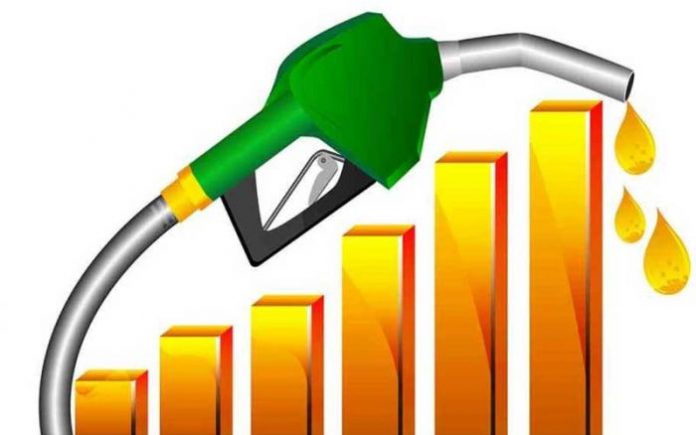

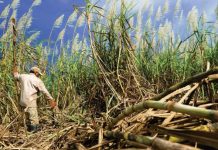





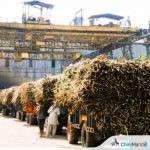
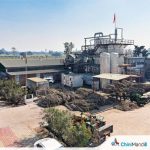

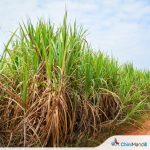
Very Useful …